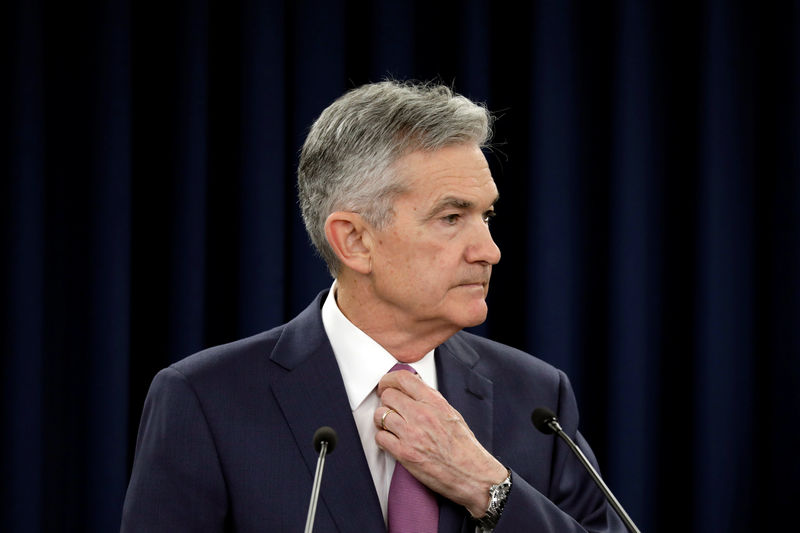By Geoffrey Smith
Investing.com -- The dollar weakens as poor U.S. industrial production data cast fresh doubt on the strength of the U.S. economic recovery. Allegations of insider trading at the Federal Reserve reach the very top. Stocks are set to open higher as earnings season cranks up: results are due from Johnson & Johnson (NYSE:JNJ), Procter & Gamble (NYSE:PG) and, after the bell, Netflix (NASDAQ:NFLX). Europe's energy crisis eases as the wind starts to blow and some mild weather forecasts cap demand, but the oil market is still as tight as a drum as OPEC struggles to raise output. Here's what you need to know in financial markets on Tuesday, 19th October.
1. Dollar weakens as output data dent inflation narrative
The dollar slumped to a three-week low while U.S. Treasury yields also dipped, after industrial production data showed U.S. factories increasingly struggling with supply chain disruptions in September.
The cheaper dollar encouraged buyers of commodities, which are still thriving at a time of elevated global demand supported by worldwide stimulus policies. Squeezes in industrial metals, accentuated by output curbs on Chinese smelters, extended, with spot premiums for copper, Tin and Nickel widening sharply.
Commodity currencies were the biggest gainers, with the oil-sensitive Russian ruble and the Australian and New Zealand dollars both hitting new highs, as traders moved to price in tightening by the central banks behind them.
2. Powell trading revelations clout re-nomination outlook
Federal Reserve Chairman Jerome Powell sold between $1 million and $5 million of stocks from his personal portfolio in October last year, only a day before the market fell sharply.
The American Prospect, which first reported the news, framed Powell’s action as a result of the Trump administration’s rejection of his plea for more fiscal stimulus as the economy slowed under a wave of Covid-19 infections. The Fed didn’t comment for TAP’s story but other newswire reports said Powell’s actions were in line with official guidelines on trading.
That’s as maybe, but the allegations come at a bad time for Powell as he battles to win a second term at the head of the central bank, against increasingly stiff resistance from the progressive wing of the Democratic Party, led by Senator Elizabeth Warren.
Powell has just forced out two regional Federal Reserve Presidents, Robert Kaplan and Eric Rosengren, after revelations that they had actively traded the market in 2020. Vice-Chair Richard Clarida, whose term ends in January, also traded actively on the eve of a Powell speech in October.
3. Stocks / Netflix
U.S. stocks are set to open higher on a day set to be dominated by corporate earnings and central banker speeches.
By 6:15 AM ET (1015 GMT), Dow Jones futures were up 143 points or 0.4%, while S&P 500 futures were up 0.5% and Nasdaq 100 futures were up 0.4%. The market had had an uneven day on Monday, with the Dow falling and the other two indices performing strongly.
Johnson & Johnson, Procter & Gamble, Philip Morris (NYSE:PM) and Travelers (NYSE:TRV) all report earnings before the open, while Netflix tops the bill after the close, with supporting acts from United Airlines and Omnicom.
Housing starts and building permits data for September are the only economic data of note, with the latter expected to fall back after two strong summer months.
4. Winds of change relieve Europe
The wind returned to Europe, taking the edge off wholesale power and gas prices that nonetheless remain well above sustainable levels. Front-month benchmark gas futures in the Netherlands weakened to just over 90 euros a megawatt-hour, down some 40% from last week’s peak. German day-ahead baseload prices fell over 50% to 64.50 EUR/MWh.
Wind generation in the U.K. and Germany, Europe’s two biggest sources of wind power, is expected to hit an all-time high this week, while warmer-than-expected temperatures are set to keep heating demand limited.
Forecasts cited by newswires from The Weather Co suggest that the warm weather is set to last through November, allowing utilities and industrial customers some breathing space as they scramble to meet fuel needs.
5. Oil strong ahead of API data
Crude oil prices, however, regained momentum to test the seven-year highs they hit on Monday, amid lingering worries that OPEC simply isn’t able to increase production as planned.
Nigeria and Angola both produced below their quota again last month, according to various newswire reports, and Saudi Arabia has not filled the gap, mindful of the bad-tempered fight it had with the United Arab Emirates over market share at last month’s OPEC+ meeting.
Oil prices are now at a level where production discipline by the major exporters has tended to break down in the past. U.S. crude prices were up 1.3% at $83.28 a barrel, while Brent futures were up 0.9% at $85.12 a barrel. The American Petroleum Institute reports weekly inventory estimates at 4:30 PM as usual.
